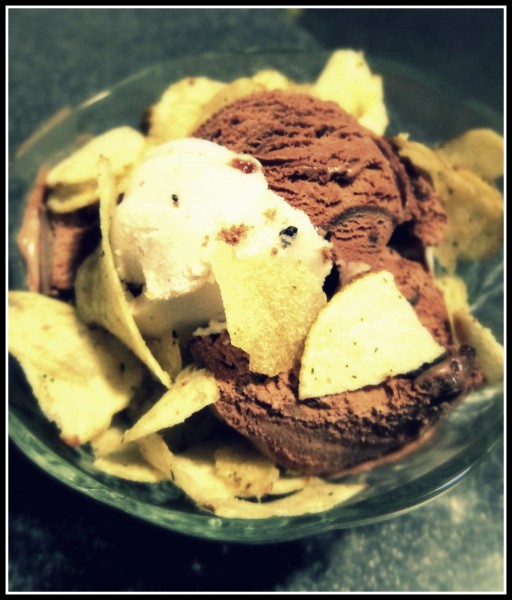
– 2 scoops Dreyer’s Double Fudge Brownie ice cream – 1 scoop Ben & Jerry’s Cherry Garcia froyo – A handful of potato chips Use the potato chips to scoop the ice cream. They may break, in which case lick your finger and get a spoon.
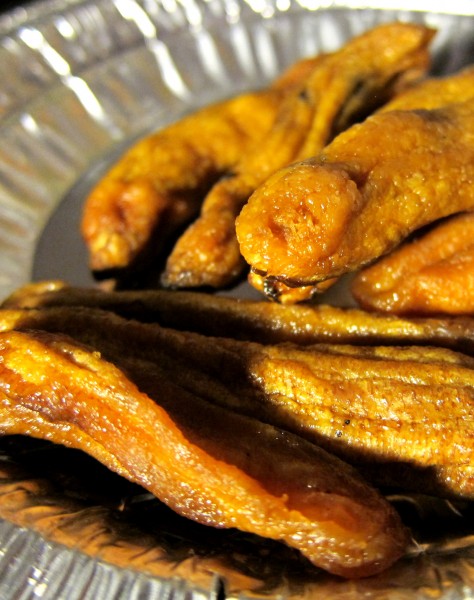 They aren’t banana chips. Those are crunchy, not very sweet, and make you thirsty. These are chewy and packed with honey sweetness. They’re as addicting as soft-baked chocolate chip cookies and as healthy as dried blueberries. At least I like to think so when I nibble twenty of them in one go. Chewy dried bananas come in many shapes and sizes. Some were pressed into flat sheets (3-5 bananas to make a sheet), laid on bamboo panels and dried under the sun. Cà Mau is known for this kind of chuối khô, the main ingredient of the other 101 banana snack things in the South, e.g., banana candies. Other bananas are dried whole, and they turn into finger-long wrinkly banana fingers. Eurasia Delight sells two kinds: the normal chuối khô – more caramel looking, shinier, sweeter, shorter and chewier, the “organic” chuối khô – whiter, dryer, longer, not as good. Continue reading Chewy dried banana 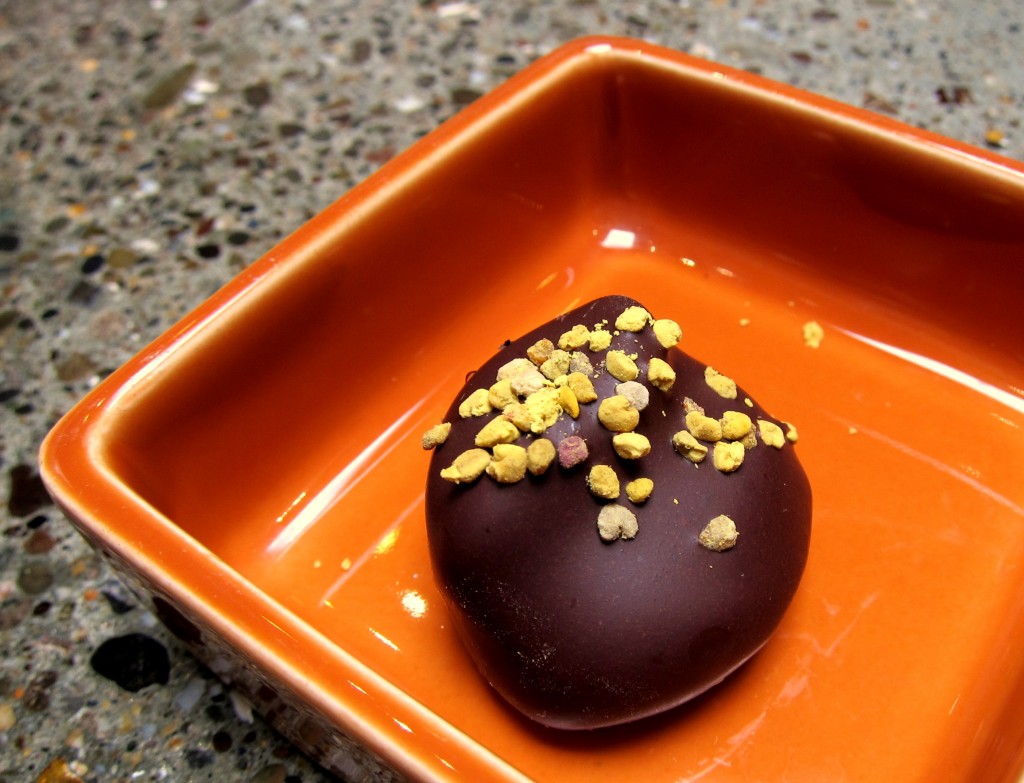 The best (known) green tea of China. The cream of the cream of the crop. I feel sophisticated just drinking it. Paired with a tangerine bee pollen truffle and I almost hear little cherubim playing the lyre. You can read the whole story in my journal Tea & Mai. I’m off to dance in my head.  “You girls know how to eat”, our hostess smiled at us, the check attached. Ten things. At a tapas place like Vanessa’s Bistro where everything sounds tasty, I’d say we did a pretty good job narrowing down our choices, and we asked for the house recommendations only three times. All rendered success. The first decision was the easiest: we’d got to get the sweet potato fries. Neither mushy like their orange cousins nor mealy like the white kinds, these Okinawan sweet potatoes, or purple yams, are sturdy in texture and just gently sweet. With or without the ginger aioli, they were loved. The small plates also stood alone splendidly, not that their dipping sauce came short. Black pepper cured filet carpaccio with roasted peanuts, fried shallots and Asian mint (húng quế). A twist on the classic Vietnamese bò nhúng dấm (carpaccio with vinegar) bò tái chanh (carpaccio with lime). (Thanks for the correction, Linh-Dang!) Continue reading Vanessa’s Bistro, sweet and savory the Vietnamese way 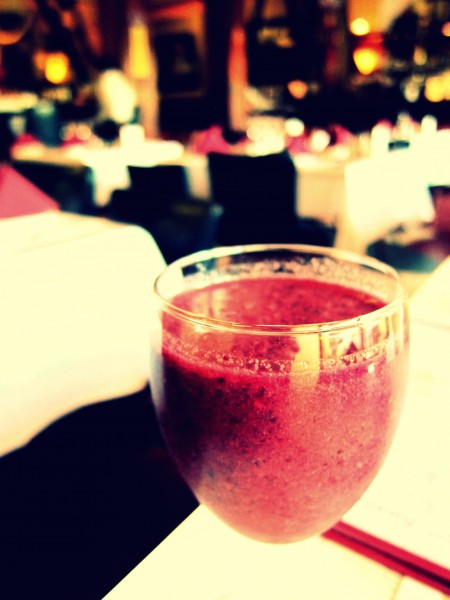 Last year I had a great meal at Himalayan Flavors, starting with a reddish purple smoothie whose ingredients I no longer remember and can’t find anywhere on their current menu, and ending with a mango dessert. The owner is Nepalese, so technically, the food is Nepalese, which is too similar to Indian for me to discern because I haven’t had much of either. A quick Google search renders over 6 million results, but the actual number of differences between Nepalese and Indian foods are few and easy enough to remember: Nepalese cooks use no cream/curd, so their gravies are thinner and more watery than Indian gravies. In Nepalese dishes, green vegetables are chopped up and stir-fried, like in Chinese cooking, except for the cumin. In Indian dishes, the green vegetables are turned into paste (like saag paneer (spinach and soft cheese), the best of which I’ve had is at Aslam’s Rasoi, but that’s a different story). Nepalese cooks do not use sugar to flavor the savory dishes. Source: Binaya Manandhar Continue reading Himalayan Flavors and the mango art 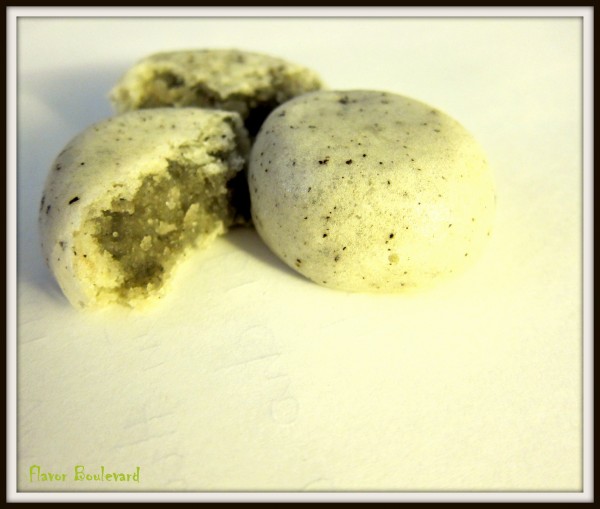 Technically, ごま蒸し饅頭 (goma mushi manjuu) means Steamed Sesame Bun (as a friend told me), but I’m a firm believer that proper nouns, i.e., names, cannot be translated without losing some of their meaning. Since there is no sufficient translation already, I might as well make the English name suitable to describe the object instead of sticking to the literal translation. Hence, to distinguish these little buns from the gazillion of buns in the Far East, I shall call them “buttons”. Flaky, multi-super-thin-layered dough. Semi-sweet black sesame paste. Adorable, in every sense of the word. Here’s the label, for those who can read Japanese: 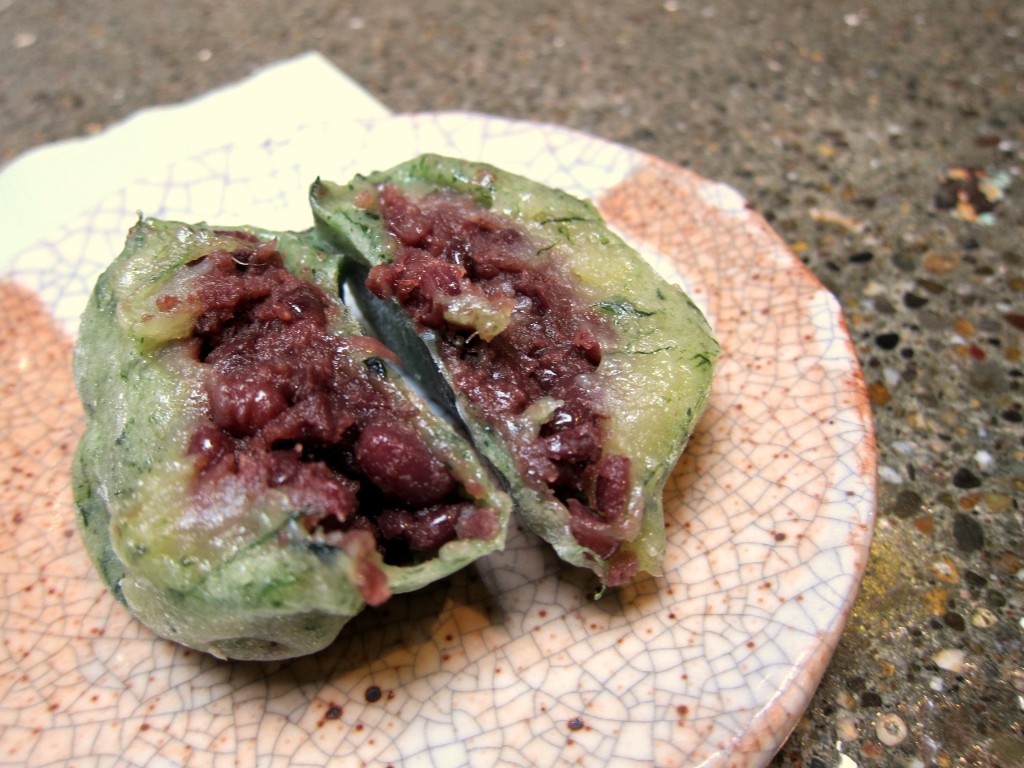 The third pairing of mochi and Japanese green tea. Perfect! Yes, finally a mochi that goes perfectly with sencha. Yomogi (Japanese mugwort), julienned into tiny strings and mixed with the mochi dough, gives the mochi a clean, refreshing taste, which reminds me of the tip of a Vietnamese bánh ít or a bánh ít gai (*). However, what struck me was the filling: red bean and sweet potato paste. The red bean is the main factor, the sweet potato is only at the top, closest to the doughy coat. The azuki sweetness subdues the fishiness (umami) of sencha, and the sencha bitterness subdues the sweetness. Is this why the Japanese use azuki for their desserts so often? Why didn’t the sencha – matcha-mochi pair work as well? The matcha mochi also has azuki paste, but I think the orange juice and the walnuts distracted me. The yomogi clarifies the taste in a more floral and less bitter way than the matcha; and like saffron, sometimes a spice’s presence isn’t noticeable, but its absence would be. Anyways, this pair also shows that a simpler mochi […] Continue reading Sencha and yomogi mochi 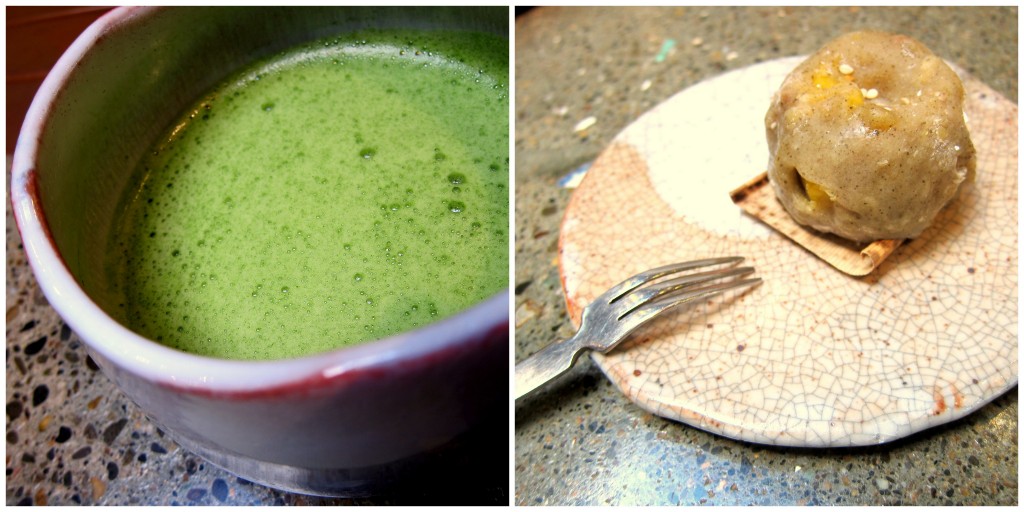 Another pairing of Japanese tea and Japanese snack. A bowl of matcha is supposed to suffice your daily vegetable need because you’re actually consuming the leaves themselves, in powder form. Matcha is served in a bowl. Mix water (205 F) with the matcha powder using a whisk, whose look reminds me of a yard broom in Vietnam, and there is no steeping time to watch out for, which I like. The whisk makes the tea foam up. The lady sitting next to me said that the foam turns her off visually, but actually the foam adds an interesting dimension to the tea. For one, it abates the seaweed taste because the foam is a cushion layer between the tea and the palate, preventing the palate to fully experience the tea. Secondly, together with the powder, it enhances the nuttiness of the tea. Near the end of the bowl, when there is more powder, the tea is extra nutty, akin to mungbean milk. Unfortunately, this nuttiness does not enhance the nuttiness of the kabocha mochi but competes with it. The mochi this time has a hojicha-flavored coat and […] Continue reading Matcha and kabocha mochi 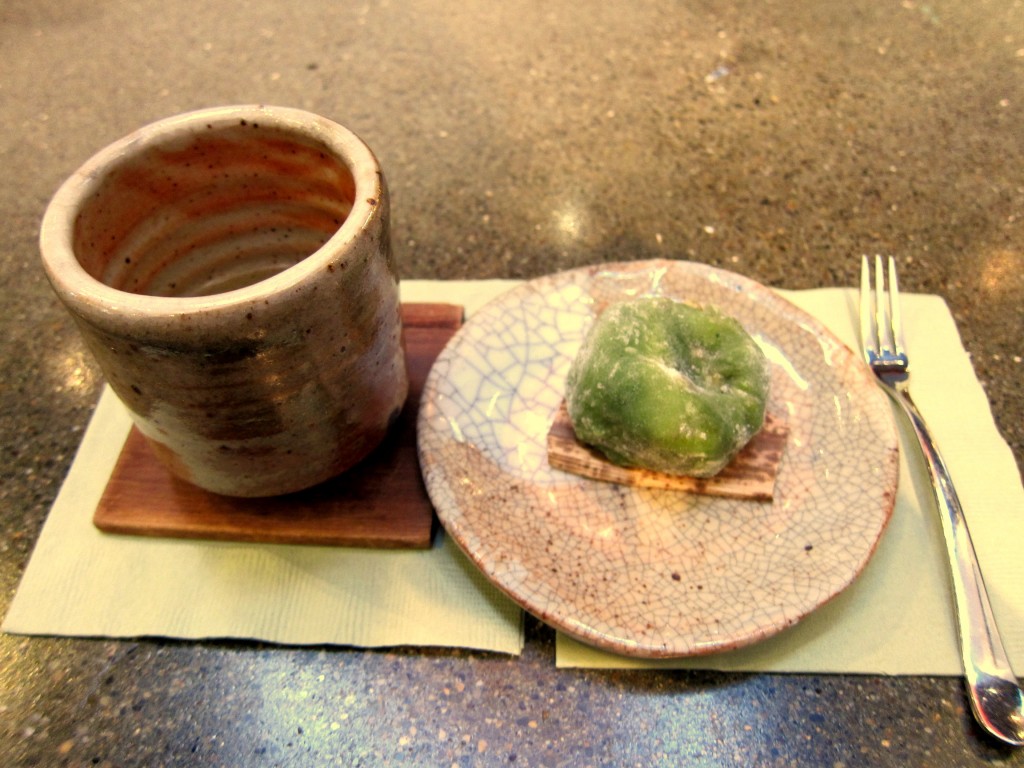 Sencha in yunomi, a typical Japanese thick, tall teacup, whose name I’ve yet to find out, accompanied by a matcha mochi, whose fillings include: satsuma sweet potato, red bean paste, orange juice and walnuts. (Thanks Masaaki for telling me the name of the cup in Japanese.) The mochi, handmade and delivered by a mochi lady every week to Teance, is refreshing both in look and in taste. The green tea flavored chewy coat is cool and light. The filling, although dominated by red bean, is not too sweet. I opted for one with less nuts because I didn’t think that I would want such contrast in texture. The mochi lady is a small, timid Asian lady, who smiled so happily when I described her mochi as “refreshing”, and who showed me that I should dip my fork into tea or water before cutting the mochi so that it would not be sticky. Yes, it worked, the fork went straight through with such ease. Now it makes sense why we can chew without the mochi sticking to the teeth. This is my second time having sencha, if we don’t count the time I had […] Continue reading Sencha and Mochi 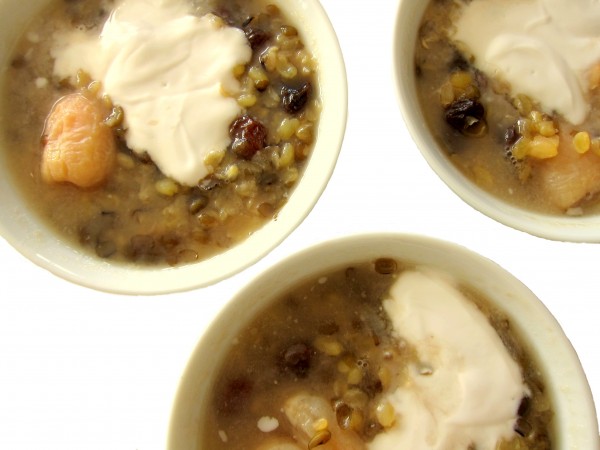 This dessert requires no skill in the making, but it ranks way up in the chè hierarchy, topping taro che and my own banana tapioca pudding. Beside the fact that Little Mom invented it, I always like things with lychee. 😉 Because everyone’s sweet tooth differs, it doesn’t make sense to have a fixed recipe for this simple dessert. One package of halved mung bean (with the green skin on), 1 can of whole lychee, 1 can of coconut milk, raisins, sugar and water are all there is to the pot. The mung bean need to be soaked in water overnight to soften and cook faster. The coconut milk and the syrup from the lychee can are mixed with water to cook the bean. More or less water depends on how thick you like your chè; the more liquidy chè served cold, which I prefer, is suitable as a palate cleanser after a big meal, and the thicker version is best as a midday snack. When the mixture boils and the bean becomes soft enough to dissolve in your mouth, add raisins and sugar to taste. Wait […] Continue reading Lychee and mung bean che (Chè đậu xanh trái vải) |
Blogs we read
|
|